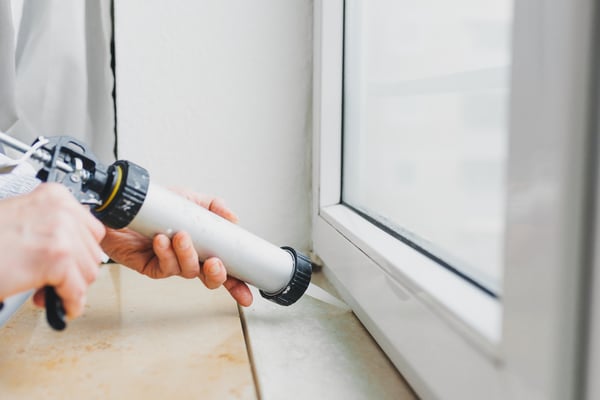As winter approaches, heating expenses for homes and businesses begin to rise. This is especially true in older properties with poor insulation or with HVAC systems that have never been updated. While a deep modernization can drastically reduce heating costs, there are quick and simple measures that work just as well.
This article will describe three simple measures that reduce heating costs in buildings, which can be implemented quickly and with minimal investment. These measures are especially useful in buildings with high heating bills now that winter is almost here.
Identify the best energy efficiency measures for your building and save electricity and gas.
1) Find and seal air leaks
Air leaks waste energy all year round, not just in winter. In the summer months, they allow contact between cool indoor air and hot outdoor air and vice versa during winter. However, finding air leaks can be challenging because they are invisible. Air leaks can be felt when you are nearby, but this is a very inefficient way to locate them.

Energy Consulting engineers can identify air leaks very quickly using methods such as thermal imaging and pressurization testing. For example, a cold draft is invisible to human eyes, but a thermal camera can detect it immediately. Thermal imaging can also detect parts of the building envelope with poor insulation, even when there are no air leaks. To complement thermal imaging, blower door testing can determine the exact rate of air infiltration into a building area.
Once you detect air leaks and spots of poor insulation, they can be fixed relatively quickly with caulking, weatherstripping, and spray foam insulation.
- Caulking is used to seal air leaks that affect fixed elements. For example, caulking may be applied if the outer edge of a window frame has air leaks.
- Caulking is used to seal moving elements. For example, weatherstripping can be used to seal the space between a door and its frame.
- Spray foam insulation can be applied to hollow building elements with insufficient insulation. Like caulking, spray foam insulation is designed for fixed components.
Applying these materials is cheap and quick, but make sure air leaks and points of poor insulation are detected first. This way, you won't waste material building already insulated and airtight elements.
2) Resetting the thermostat

Many space heating systems run at full power throughout the winter. However, this is a waste of energy unless the weather is cold enough to justify full heating capacity. Most of the time, it is possible to reduce heating without negatively impacting comfort.
According to the U.S. Department of Energy, annual heating and cooling costs can be reduced by up to 10% if the thermostat is set to 7-10°F for 8 hours a day. This schedule can be programmed into a smart thermostat or building automation system (BAS), and heating costs will fall even when HVAC installations are not modified.
Lowering the thermostat is an energy-saving measure that works even with older heating systems. However, you will achieve even lower costs if the equipment also has a high efficiency rating.
The heating power should only be reduced when it does not affect comfort. A study from Lawrence Berkeley National Laboratory (LBNL) found that the ideal temperature for human productivity is about 22°C (71.6°F), but personal preferences also play a role. The WELL Building Standard recommends designing commercial spaces with a range of temperatures and letting occupants sit where they feel most comfortable.
3) Getting a professional inspection of your heating systems

An upgrade to your heating equipment can significantly reduce your energy bills. However, there are also cases where energy is wasted due to simple maintenance issues or configuration errors. The easiest way to detect these problems is to have a professional inspection.
If you use fuel-burning equipment, a professional inspection can also help you improve safety. Combustion gases must be adequately exhausted, as they are very dangerous when they accumulate in closed environments. For example, carbon monoxide is lethal to humans at concentrations of less than 1%. With an inspection, you can determine if there is an exhaust gas leak in the building.
A professional assessment of your heating systems can also identify areas of opportunity for an upgrade. HVAC engineers do not recommend a major upgrade when space heating is needed, but it can be scheduled for the summer.
Conclusion
In places with cold winters, space heating represents the biggest energy expenditure for many buildings. Equipment upgrades and other major improvements provide the biggest energy savings, but there are also simple measures that are quick and affordable.
You can achieve quick energy savings this winter by air-sealing your property, adjusting your thermostat, and having your heating units professionally inspected. A major HVAC upgrade will yield greater savings, but is only recommended if it can be completed on time.

